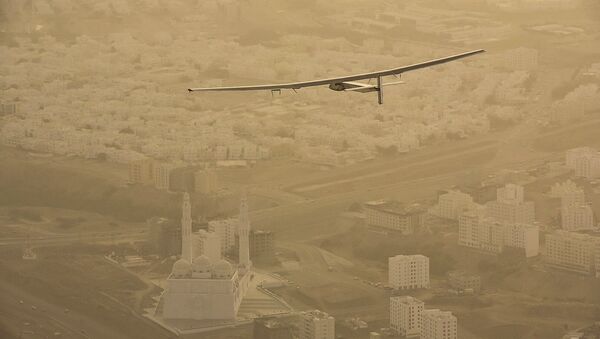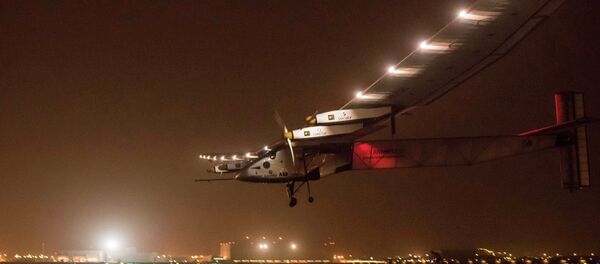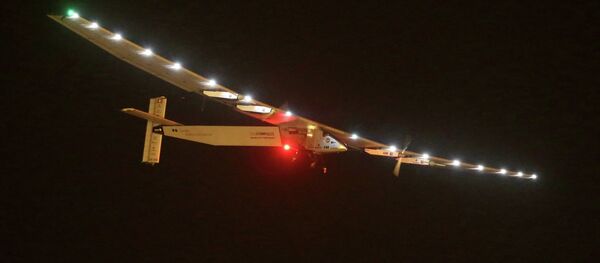TOKYO (Sputnik) – The plane made an unplanned stop in Nagoya, Japan, on June 1 because of unfavorable weather conditions. It was originally supposed to fly over the Pacific Ocean from Nanjing, China, but diverted to Japan as it needed the right conditions to attempt a 120-hour flight to Hawaii.
The Solar Impulse 2 round-the-world journey began in March, when the plane departed from Abu Dhabi, the capital of the United Arab Emirates. The plane has since made stops in Oman, India, Myanmar and China.
There are over 17,200 solar cells on the plane's upper wing surface, fuselage and tailplane that collect the sun's energy which powers the engines. SI-2 can reach a maximum speed of 140 kilometers (87 miles) per hour. Its wingspan is 72 meters (236 feet) and the weight is only 2,300 kilograms, or 5,070 pounds, equivalent to that of a car.
The aircraft's prototype is Solar Impulse 1, which was used by Borschberg to conduct the world's first ever manned 26-hour solar-powered flight in July, 2010.



